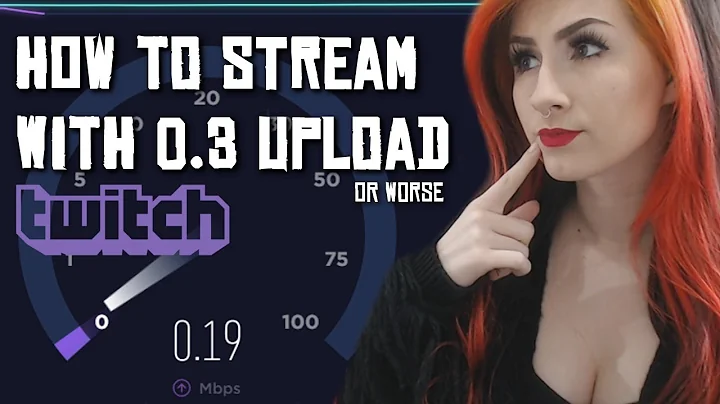How to make rtpjitterbuffer work on a stream without timestamps?
Solution 1
You've partially answered the problem already:
If I replace the .h264 file with an MP4 file, the playback works great.
I assume that my h264 stream does not have the required timestamps to enable the jitter buffer to function.
Your sender pipeline has no negotiated frame rate because you're using a raw h264 stream, while you should really be using a container format (e.g., MP4) which has this information. Without timestamps udpsink cannot synchronise against clock to throttle, so the sender is spitting out packets as fast as pipeline can process them. It's not a live sink.
However adding a rtpjitterbuffer makes your receiver act as live source. It freezes because it's trying its best to cope with the barrage of packets of malformed timestamps. RTP doesn't transmit "missing" timestamps to best of my knowledge, so all packets will probably have the same timestamp. Thus it probably reconstructs the first frame and drops the rest as duplicates.
I must agree with user1998586 in the sense that it ought to be better for the pipeline to crash with a good error message in this case rather trying its best.
Is it possible to automatically generate timestamps on the sender by specifying the "framerate" caps correctly somewhere? So far my attempts have not worked.
No. You should really use a container.
In theory, however, an au aligned H264 raw stream could be timestamped by just knowing the frame rate, but there are no gstreamer elements (I know of) that do this and just specifying caps won't do it.
Solution 2
I had the same problem, and the best solution I found was to add timestamps to the stream on the sender side, by adding do-timestamp=1 to the source.
Without timestamps I couldn't get rtpjitterbuffer to pass more than one frame, no matter what options I gave it.
(The case I was dealing with was streaming from raspvid via fdsrc, I presume filesrc behaves similarly).
It does kinda suck that gstreamer so easily sends streams that gstreamer itself (and other tools) doesn't process correctly: if not having timestamps is valid, then rtpjitterbuffer should cope with it; if not having timestamps is invalid, then rtph264pay should refuse to send without timestamps. I guess it was never intended as a user interface...
Related videos on Youtube
matt
I work for Skydio, a drone start-up in the SF Bay Area www.skydio.com
Updated on August 15, 2022Comments
-
matt over 1 year
I am sending an H.264 bytestream over RTP using gstreamer.
# sender gst-launch-1.0 filesrc location=my_stream.h264 ! h264parse disable-passthrough=true ! rtph264pay config-interval=10 pt=96 ! udpsink host=localhost port=5004Then I am receiving the frames, decoding and displaying in other gstreamer instance.
# receiver gst-launch-1.0 udpsrc port=5004 ! application/x-rtp,payload=96,media="video",encoding-name="H264",clock-rate="90000" ! rtph264depay ! h264parse ! decodebin ! xvimagesinkThis works as is, but I want to try adding an rtpjitterbuffer in order to perfectly smooth out playback.
# receiver gst-launch-1.0 udpsrc port=5004 ! application/x-rtp,payload=96,media="video",encoding-name="H264",clock-rate="90000" ! rtpjitterbuffer ! rtph264depay ! h264parse ! decodebin ! xvimagesinkHowever, as soon as I do, the receiver only displays a single frame and freezes.
If I replace the .h264 file with an MP4 file, the playback works great.
I assume that my h264 stream does not have the required timestamps to enable the jitter buffer to function.
I made slight progress by adding
identity datarate=1000000. This allows the jitterbuffer to play, however this screws with my framerate because P frames have less data than I frames. Clearly theidentityelement adds the correct timestamps, but just with the wrong numbers.Is it possible to automatically generate timestamps on the sender by specifying the "framerate" caps correctly somewhere? So far my attempts have not worked.
-
matt over 7 yearsWith an "identity" element in the sender pipeline, mode=0 made the playback choppier. Tuning the datarate didn't help. Without an "identity" element, mode=0 had no effect: the receiver pipeline still freezes on the first frame.
-
Andrew K almost 3 yearsHow do you use a container? Do you mean a protocol like RTSP or mpegts?
-
 JohnLM almost 3 years@AndrewK, no, I mean a container format like MP4 or MKV. MPEG TS might work too, but has caveats of its own.
JohnLM almost 3 years@AndrewK, no, I mean a container format like MP4 or MKV. MPEG TS might work too, but has caveats of its own.













